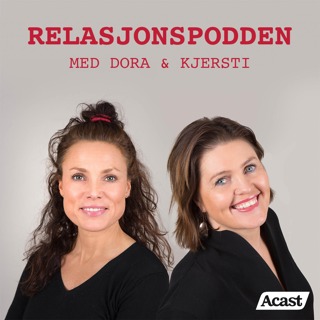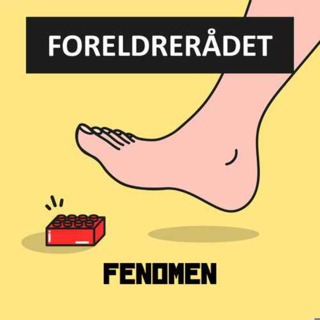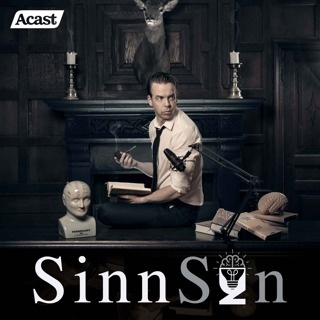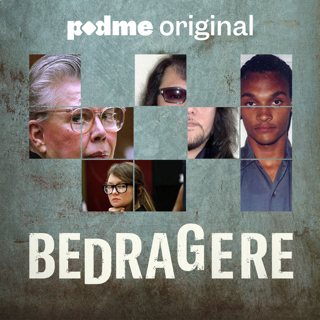
Episode 116 - Transfer of Stimulus Control w/ Dr. Mary Barbera
What a nice way to kick off our March episodes with author, Dr. Mary Barbera, stopping by to talk about verbal behavior. We take a look into the process of using transfer procedures to teach tacts as well as get the chance to chat with Dr. Barbera about her own professional and personal history and how it led to her current work on the Turn Autism Around podcast. And, if you enjoy this episode, why not check out our guest appearance on Mary’s show later this month! Articles discussed this episode: Barbera, M.L. & Kubina, Jr., R.M. (2005). Using transfer procedures to teach tacts to a child with autism. The Analysis of Verbal Behavior, 21, 155-161. doi: 10.1007/bf03393017 Bloh, C. (2008). Assessing transfer of stimulus control procedures across learners with autism. The Analysis of Verbal Behavior, 24, 87-101. doi: 10.1007/bf03393059 If you're interested in ordering CEs for listening to this episode, click here to go to the store page. You'll need to enter your name, BCBA #, and the two episode secret code words to complete the purchase. Email us at abainsidetrack@gmail.com for further assistance.
11 Mar 20201h 9min

March 2020 Preview
Game on! We just can’t stop having fun, so much so that Rob even invented a brand-new game to celebrate another month of research articles. Between trying to figure out arcane rules, we share the March topics which run the table from verbal behavior to healthy eating to which work-trial type is best for you (well, maybe). So, pull up a d20 and enjoy this month’s preview! Articles for March 2020 Transfer of Stimulus Control w/ Dr. Mary Barbera Barbera, M.L. & Kubina, Jr., R.M. (2005). Using transfer procedures to teach tacts to a child with autism. The Analysis of Verbal Behavior, 21, 155-161. doi: 10.1007/bf03393017 Bloh, C. (2008). Assessing transfer of stimulus control procedures across learners with autism. The Analysis of Verbal Behavior, 24, 87-101. doi: 10.1007/bf03393059 Promoting Healthful Behavior w/ The Behavior Chefs (Clint Evans and Tony Chambers) Rafacz, S.D. (2019). Healthy eating: Approaching the selection, preparation, and consumption of healthy food as choice behavior. Perspectives on Behavior Science, 42, 647-674. doi: 10/1007/s40614-018-00190-y Kurti, A.N. & Dallery, J. (2013). Internet-based contingency management increases walking in sedentary adults. Journal of Applied Behavior Analysis, 46, 568-581. doi: 10.1002/jaba.58 Meredith, S.E., Grabinski, M.J., & Dallery, J. (2011). Internet-based group contingency management to promote abstinence from cigarette smoking: A feasibility study. Drug and Alcohol Dependence, 118, 23-30. doi: 10.1016/j.drugalcdep.2011.02.012 Massed Trials Vs. the World Henrickson, M.L., Rapp, J.T., & Ashbeck, H.A. (2015). Teaching with massed versus interspersed trials: Effects on acquisition, maintenance, and problem behavior. Behavioral Interventions, 30, 36-50. doi: 10.1002/bin.1396 Majdalany, L.N., Wilder, D.A., Greif, A., Mathisen, D., & Saini, V. (2014). Comparing massed-trial instruction, distributed-trial instruction, and task interspersal to teach tacts to children with autism spectrum disorders. Journal of Applied Behavior Analysis, 47, 657-662. doi: 10.1002/jaba.149 Haq, S.S., Kodak, T., Kurtz-Nelson, E., Porritt, M., Rush, K., & Cariveau, T. Comparing the effects of massed and distributed practice on skill acquisition for children with autism. Journal of Applied Behavior Analysis, 48, 454-459. doi: 10.1002/jaba.213
4 Mar 202022min

Episode 115 - Self-Monitoring
Though the topic has come up before, we decided it was high time that self-monitoring got its very own episode. Then, rather than just share a bunch of old research about how cool self-monitoring is, we figured we’d look for some of the more interesting ways self-monitoring has been used to improve behavior. From spelling tests to training classes. From swimming pools to electricity meters (though not at the same time), Can a procedure so easy really be that effective? Articles discussed this episode: Winett, R.A., Neale, M.S., & Grier, H.C. (1979). Effects of self-monitoring and feedback on residential electricity consumption. Journal of Applied Behavior Analysis, 12, 173-184. doi: 10.1901/jaba.1979.12-173 Critchfield, T.S. (1999). An unexpected effect of recording frequency in reactive self-monitoring. Journal of Applied Behavior Analysis, 32, 389-391. doi: 10.1901/jaba.1999.32-389 Rafferty, L.A., Arroyo, J., Ginnane, S., & Wilczynski, K. (2011). Self-monitoring during spelling practice: Effects on spelling accuracy and on-task behavior of three students diagnosed with attention deficit hyperactivity disorder. Behavior Analysis in Practice, 4, 37-45. doi: 10.1007/BF03391773 Plavnick, J.B., Ferreri, S.J., & Maupin, A.N. (2010). The effects of self-monitoring on the procedural integrity of a behavioral intervention for young children with developmental disabilities. Journal of Applied Behavior Analysis, 43, 315-320. doi: 10.1901/jaba.2010.43-315 If you're interested in ordering CEs for listening to this episode, click here to go to the store page. You'll need to enter your name, BCBA #, and the two episode secret code words to complete the purchase. Email us at abainsidetrack@gmail.com for further assistance.
26 Feb 20201h 15min

Episode 114 - Police Academy 8: Behavior Analysts on Patrol w/ Dr. John O'Neill
One of the joys of having done the podcast long is learning about the sheer number of applications of behavior analysis in the world. This week, Dr. John O’Neill brings us ABA in a way we never expected: Behavior assessment as a means of improving police training. Aside from the novel use of FBA methodology, we discuss the current state of police academy procedure in America and some of the ways behavior analysis might be able to help. Articles discussed this episode: O’Neill, J. (2018). Functional behavior assessment of the unintentional discharge of firearms in law enforcement. Journal of Organizational Behavior Management, 38, 275-287. doi: 10.1080/01608061.2018.1514348 O’Neill, J., O’Neill, D.A., Weed, K., Hartman, M.E., Spence, W., & Lewinski, W.J. (2019). Police academy training, performance, and learning. Behavior Analysis in Practice, 12, 353-372. doi: 10.1007/s40617-018-00317-2 If you're interested in ordering CEs for listening to this episode, click here to go to the store page. You'll need to enter your name, BCBA #, and the two episode secret code words to complete the purchase. Email us at abainsidetrack@gmail.com for further assistance.
19 Feb 20201h 10min

Episode 113 - Visual Inspection
For some reason Jackie decided that we needed to learn more about visual inspection. So, we did! Now we’re all refreshed on the steps involved in analyzing data graphically and making the best treatment decisions possible. If you listen to this week’s episode, your graph of “understanding the steps of visual inspection” will be on a very clear increasing trend. Articles discussed this episode: Vanselow, N.R., Thompson, R., & Karsina, A. (2011). Data-based decision making: The impact of data variability, training, and context. Journal of Applied Behavior Analysis, 44, 767-780. doi: 10.1901/jaba.2011.44-767 Wolfe, K., Barton, E.E., & Meadan, H. (2019). Systematic protocols for the visual analysis of single-case research data. Behavior Analysis in Practice, 12, 491-502. doi: 10.1007/s40617-019-00336-7 Falligant, J.M., McNulty, M.K., Hausman, N.L., & Rooker, G.W. (2019). Using dual-criteria methods to supplement visual inspection: Replication and extension. Journal of Applied Behavior Analysis. doi: 10.1002/jaba.665 If you're interested in ordering CEs for listening to this episode, click here to go to the store page. You'll need to enter your name, BCBA #, and the two episode secret code words to complete the purchase. Email us at abainsidetrack@gmail.com for further assistance.
12 Feb 20201h 25min

ABA Trivia Night on February 26th at Ground Effect Brewery
If you’re going to be in Massachusetts on February 26th at 7, come to Ground Effect Brewing in Hudson, MA for our first ABA Trivia Night! We’ll have fun questions, prizes, and beer with your pals at ABA Inside Track. Come join a team of four like-minded BCBAs and make some new friends or bring your colleagues for some after-work bonding. And, best of all, this event will be entirely FREE! Check out the Ground Effect website for more information for directions and email us for more information. We can’t wait to see you there!
10 Feb 20201min

February 2020 Preview
Heeeeey, it’s Rob’s birthday. And rather than watch the time-caper thriller “Happy Death Day 2U” like he wanted to, let’s have a February preview. This month we kick things off with a trip to the gallery of line graphs to discuss improvements in visual inspection methodology. After that, we’ll be joined by Dr. John O’Neill to learn about how behavior analysis can inform research into improving police training. Finally, we revisit a tangentially-discussed topic with articles reviewing a multitude of ways to utilize self-monitoring. Then I’m promised we can eat cake and play video games. Also, don’t forget to join us on February 26th @ 7pm at Ground Effect Brewery in Hudson, MA for our very first ABA Trivia evening! Articles for February 2020 Visual Inspection Vanselow, N.R., Thompson, R., & Karsina, A. (2011). Data-based decision making: The impact of data variability, training, and context. Journal of Applied Behavior Analysis, 44, 767-780. doi: 10.1901/jaba.2011.44-767 Wolfe, K., Barton, E.E., & Meadan, H. (2019). Systematic protocols for the visual analysis of single-case research data. Behavior Analysis in Practice, 12, 491-502. doi: 10.1007/s40617-019-00336-7 Falligant, J.M., McNulty, M.K., Hausman, N.L., & Rooker, G.W. (2019). Using dual-criteria methods to supplement visual inspection: Replication and extension. Journal of Applied Behavior Analysis. doi: 10.1002/jaba.665 Police Academy 8: Behavior Analysts on Patrol w/ Dr. John O’Neill O’Neill, J. (2018). Functional behavior assessment of the unintentional discharge of firearms in law enforcement. Journal of Organizational Behavior Management, 38, 275-287. doi: 10.1080/01608061.2018.1514348 O’Neill, J., O’Neill, D.A., Weed, K., Hartman, M.E., Spence, W., & Lewinski, W.J. (2019). Police academy training, performance, and learning. Behavior Analysis in Practice, 12, 353-372. doi: 10.1007/s40617-018-00317-2 Self-monitoring Winett, R.A., Neale, M.S., & Grier, H.C. (1979). Effects of self-monitoring and feedback on residential electricity consumption. Journal of Applied Behavior Analysis, 12, 173-184. doi: 10.1901/jaba.1979.12-173 Critchfield, T.S. (1999). An unexpected effect of recording frequency in reactive self-monitoring. Journal of Applied Behavior Analysis, 32, 389-391. doi: 10.1901/jaba.1999.32-389 Rafferty, L.A., Arroyo, J., Ginnane, S., & Wilczynski, K. (2011). Self-monitoring during spelling practice: Effects on spelling accuracy and on-task behavior of three students diagnosed with attention deficit hyperactivity disorder. Behavior Analysis in Practice, 4, 37-45. doi: 10.1007/BF03391773 Plavnick, J.B., Ferreri, S.J., & Maupin, A.N. (2010). The effects of self-monitoring on the procedural integrity of a behavioral intervention for young children with developmental disabilities. Journal of Applied Behavior Analysis, 43, 315-320. doi: 10.1901/jaba.2010.43-315
5 Feb 202018min

Episode 112 - Lying Behavior
Because your ABA Inside Track hosts are such chronic truth-tellers, we decided it was time to look into this “lying” we’ve heard so much about. For instance, we’re not sure why anyone would ever lie. Or whether it’s an important skill to learn how to lie, especially when your best friend tries on a questionable outfit. Or if learning about George Washington can really improve honesty. We promise, if you listen to ABA Inside Track’s new episode, you will be popular and more attractive.* *Note: we’re probably lying. Though we bet you’re still swell. Articles discussed this episode: Reinecke, D.R., Newman, B., Kurtz, A.L., Ryan, C.S., & Hemmes, N.S. (1997). Teaching deception skills in a game-play context to three adolescents with autism. Journal of Autism and Developmental Disorders, 27, 127-137. doi: 10.1023/a:1025835706522 Bergstrom, R., Najdowski, A.C., Alvarado, M., & Tarbox, J. (2016). Teaching children with autism to tell socially appropriate lies. Journal of Applied Behavior Analysis, 49, 1-6. doi: 10.1002/jaba.295 Sauter, J.A., Stocco, C.S., Luczynski, K.C., & Moline, A.D. (2019). Temporary, inconsistent, and null effects of a moral story and instruction on honesty. Journal of Applied Behavior Analysis. doi: 10.1002/jaba.552 If you're interested in ordering CEs for listening to this episode, click here to go to the store page. You'll need to enter your name, BCBA #, and the two episode secret code words to complete the purchase. Email us at abainsidetrack@gmail.com for further assistance.
29 Jan 20201h 9min






















